Who was the wealthiest man in American history? People will most likely think of Jeff Bezos or Elon Musk, but one person still has almost 100 billion over those two icons. That person is named John D. Rockefeller. As the founder of Standard Oil Company, Rockefeller had a net worth of over 291 billion dollars. But, how did this Titan of the business industry become the wealthiest American in history?
During the early years of oil refining in the Cleveland area, a young and inspired entrepreneur named John D. Rockefeller partnered with his business friend named Clark. They made a small business shipping produce. Their business was steadily increasing, but, they wanted to see how far they could take the small business, and what they could make of it. The increasing amounts of crude oil coming from the Cleveland-area refineries and the profits those refineries were accruing made an impression on Rockefeller. Clark and Rockefeller had some business experience, but with very small companies, and their main profit came from the transportation sector. Rockefeller saw how oil had taken off in a big way. Oil was being used to light lamps and lubricate machines, and a number of enterprises wanted to start a refinery and get into the business. Rockefeller noticed the scramble for oil, and he saw the opportunity that oil could bring him. He went to Clark and decided that they would get into the oil refinery business. But one of their problems was in starting a refinery; they didn’t have any technical knowledge. In 1863, a man with the experience and knowledge to start a refinery, Samuel Andrews, stepped in and helped Clark and Rockefeller. They built their first refinery. Clark was eventually bought out by Rockefeller, and the American Civil War ended, putting Rockefeller on the map for growth.1
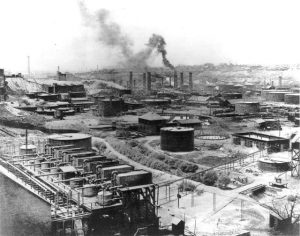
His experience as a produce shipper had sensitized young Rockefeller to problems of transportation. As the refinery business grew, problems arose with shipping. There was a large demand for oil and not enough oil barrels to transport it from the wells to the refineries. There was also a lack of materials to make enough oil barrels to support the high demand. Rockefeller needed a way to transport oil in a more efficient way. During this time, pipelines had been on the rise for the transportation of liquids, and they could effectively move oil from the oil rigs to the refineries. Many companies had resorted to the use of pipelines to move oil rather than using barrels. The pipelines were also a faster way of getting oil from one place to another. Rockefeller also saw pipelines as an opportunity to get ahead of competitors. He used starter pipes to connect long distances to get his oil to the refineries. The barrel system was also becoming outdated with the railroad companies themselves, with pipelines increasing. There was no need for oil barrels to be transported on trains. Pipelines had slowly made oil barrels obsolete. As Rockefeller had said about the difficulties, “We soon discovered, as the business grew, that the primary method of transporting oil in barrels could not last.”2
In the 1860s, industrial development was expanding around the country. But with the expansion came a big problem that most of the major industries were not ready for and had to adapt to. Following the wild expansion of the 1860s, an economic depression blanketed the country, and the oil industry was hit hard. With the depression, the railroad companies started to gain an advantage over Rockefeller and they pushed his massive refinery business to the edge of bankruptcy. The railroads had placed high prices on Rockefeller’s oil distribution, but he had a plan in store for them. Late in 1870, Rockefeller felt ready to force the issue with the railroads. Standard Oil Company of Ohio had a large amount of cash, and it quietly started buying out every small oil refinery in the region. Each one of the refineries had small oil tank cars in use, and each one of the tank cars going into a refinery would now go to Rockefeller’s business since he owned those refineries. Tank cars were easier to use than oil barrels because they carried oil in large railcar tanks. It took smaller amounts of iron to make them than barrels. One tank car carried the same amount of oil as fifty barrels. They were quite small and in an experimental stage. Rockefeller used those tank cars as a more efficient way to get the oil to the contractor. But the tank cars that were being used were not as advanced or as large as Rockefeller would soon make them. With every refinery acquired, Rockefeller increased the number of tank cars at his disposal.3 With Rockefeller in control of more than half of the oil refineries, some railroad companies began to lose business, because Rockefeller stopped using railroads to transport his oil, and used pipelines instead. The small refineries that went out of business and were picked up by Rockefeller were relying on smaller railroad companies for profit. With Rockefeller not using the railroads to transport oil barrels to refineries, those small refineries were forced to go bankrupt, and as they began to falter, the small oil refineries became desperate. They were pushed over the edge into Rockefeller’s hands. He waited for those refineries to go out of business; then he took them over.
With the expansion of the Standard Oil Company, the railroad companies saw Rockefeller’s developing monopoly as a serious problem. Tom Scott of the Pennsylvania Railroad designed a scheme to try to take over or destroy Rockefeller’s industry. Scott, along with Vanderbilt of the New York Central Railroad, Gould of the Erie Transport Company, and McCellan of the Atlantic and Great Western Railroad, decided to form the South Improvement Company. It was a group designed to further the interests of railroad and refinery development. The group of railroad owners had one very informed member inside the group, Tom Scott of Pennsylvania. He was able to persuade the Pennsylvania State legislatures to grant a remarkable charter for the company. The charter embraced rights so broad and so vaguely defined as to permit the company’s owners to carry on virtually any business of their choosing and in virtually any way they chose.4 The document that the South Improvement Company had acquired modified old and new laws to serve the aims of the railroad tycoons.
Tom Scott went to Rockefeller to ask him to join the South Improvement Company. What was promised was that the refineries that Rockefeller was in control of would be assured that each railroad prearranged a share of tank car freight. Tank car assignments and movements would be controlled by the railroads in their interest. Pipelines would cooperate. Selected refineries would be assured of dictatorial power over the Pennsylvania producers and the prices of crude oil.5 About every tank car of oil shipped from Cleveland by a rival refinery would bring about forty dollars into Standard Oil’s hands. Rockefeller could have wished for more but saw this as an opportunity, so he joined it. He saw the benefits in joining, but unknown to Rockefeller, the entire plan was a scheme and he had joined it blindly.
The Scheme itself was that for every rival refinery that used the South Improvement Company’s railroads or standards tank cars, money would be going into the Company. Also, the South Improvement Company planned to turn the oil business of the country over to a cartel of a few large refiners who would destroy all competition. They would raise the price of oil products to consumers; they dubbed their strategy “Acres of Diamonds.” Once Rockefeller was in, he threw himself into making the new combine effective. But something had stopped the entire company as a whole.
The Press in the oil regions got wind of the scheme and exposed it before it could be fairly launched. With poverty stalking the land, such a display of greed on the part of big business was salt in the nation’s economic wounds.6 The Press had gone to the newspapers, and mass meetings and protests occurred. Independent refiners stormed the Pennsylvania legislature for allowing something like this to happen. Oil fields were blocked, and workers stopped trains going to the South Improvement refineries. In a panic, the state legislature revoked the charter of the South Improvement Company. In a hasty effort to save themselves, the railroads canceled all contracts made with refineries under Scott’s plan, and they piously sought to convince the public that the oil men alone were the villains of the piece. The independent oil refineries saw this as a way to get revenge on Standard Oil for the problems with trading that they had long ago. Suddenly, the producers’ association announced that its members would no longer sell to refiners who had been part of the South Improvement gang.7 The entire event had turned into a boycott of mainly Rockefeller and his Standard Oil Company.
After everything had settled down with workers and the general public, it seemed that the final effect of the scheme was a boycott on Standard Oil. The boycott hit Standard Oil hard and Cleveland refiners came to a standstill; nine out of ten workers were let go. It also changed the way that the refineries were looked at in general. A lot of transportation companies stopped doing business with Rockefeller because they were afraid that he would increase the price of what was being shipped out while the oil production costs stayed the same. Crude oil was not being shipped, and profits were being destroyed. Rockefeller’s monopoly was also being destroyed. Rockefeller needed to restart his business; he saw a new sort of transportation in the works that could be used. Tank cars, long cylinder train cars that could carry more oil in them, especially compared to oil barrels. During the time, there was no perfect tank car model and only smaller refineries used them because it was an easier way to move oil, but the production of these tank cars looked promising. He wanted to perfect the model and make it as large and efficient for oil transportation as possible. So Rockefeller shifted to tank cars for the transportation of oil. He made his own tank cars, trying to use the least amount of iron needed to make them, and he tried to make them as large in volume as possible, in order to carry more oil. They started to show positive results in the business. Many refineries got these tank cars, and they never had to replace them. It was a major change from using oil barrels because barrels could be lost, stolen, or they might leak. So the tank cars were truly a fateful invention. The profits started to increase rapidly since there was no need to have constant manufacture of barrels anymore or pay for pipelines since they could just use their own tank cars repeatedly. They only used pipelines for transporting oil from the wells to the refineries. The increase in profits started to be overwhelming to the rival refineries in Ohio, and Rockefeller’s pressure started to deteriorate them.
The railroads had been watching this happen and worried about Rockefeller’s growth in tank cars. The railroads were still using old, outdated train cars to get their supplies to their consumers, so they wanted to change that. They started to invest in equipment for repair on present forms of transportation and another investment, dome cars, turning their backs on the tank cars. Dome cars were another way of transportation, but for people; they were luxury cars with a glass dome on top. But the investment would cost them millions, which made them reluctant. They didn’t want to side with Rockefeller and his tank car production out of spite. So in the mix of investing, they came up with a new plan. They planned on repairing damaged tank cars, and sought to keep the tank cars from private owners. They held the tank cars from private owners, not relying on Rockefeller, so they could keep them safe, and then offer them to the owners for their use on contract. In the end, their plan wasn’t even worth it. Standard Oil had put pressure on the railroads to drop their plan, and they had no choice since they still needed Rockefeller in the transportation of his oil and their profits. Though because they turned their backs on tank cars, which showed that they had lost a great deal of power. It was not long before they realized it.8
With the railroads investing in dome cars and in railroad maintenance, their prospects looked to be futile. Companies did not buy into these dome cars and everything that they invested in seemed to be going down in flames. They were desperate, and one of them made a major decision, Gould of Erie Transport. Gould had been one of the major investors in the Southern Improvement Company, and he was also riding the dome car speculation. He saw that his profits declined because of the failure of the investments in dome cars, and he wanted to change his inevitable fate. What was ultimately decided was for Erie Transport to join Standard’s stockholders’ group and merge their best works. The stockholders held shares in the company and sought to promote investing in Standard Oil stock to the common investor. With Rockefeller’s tank cars and Erie’s massive railroad connections, they could work together to grow each one. Although, since Erie merged into the Standard Company, Rockefeller could adjust Erie’s forms and plans of transportation without Gould’s permission.
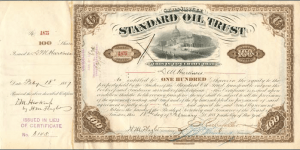
Another person who joined was one of the stockholders that would help Rockefeller out a good deal. J.J. Vandergrift, founder of Star Tank Pipelines, was put as head of the pipeline growth system for Standard Oil Company.9 With the expansion of all these different companies, like Stark Tank Pipelines and Erie Transportation, Vandergrift realized that there had been a pause in the production of tank cars. The companies that he had been selling to had stopped buying from him because the tank cars that were originally bought needed no replacement, causing financial problems. He had to do something. There was one person that he could go to. William Vanderbilt was at the center of the tank car problem and could solve it with his fortune. So Rockefeller approached him.10 Rockefeller went to Vanderbilt and wanted to offer him a deal, but Vanderbilt declined to even speak of the topic. Thus Rockefeller withdrew all of his business from Central, which destroyed the company but not Vanderbilt since he was rich enough to withstand the losses.11
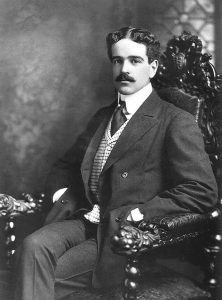
Because of this failure to deal with Vanderbilt, the plague of tank cars still raged on for Rockefeller. The current tank cars were so perfect, the contractors had no need for a replacement. Still losing money because no companies needed more tank cars from him. Though, things were about to change for Rockefeller. The profit and worth of Standard Oil Company were seen as promising on Wall Street.
The time had come when Standard Oil revealed itself as the largest and strongest refinery in the country.12 During the late 1880s, Rockefeller had grown, but a change was occurring within him. He decided to start a company similar to the South Improvement Company. He wanted to start a company to help out smaller or regular-sized oil refinery companies. But as with the South Improvement Company, it was all a plan for growth for Rockefeller. Rockefeller made the Central Refiner’s Association; small refinery companies could share Standard’s connections and supplies, but Rockefeller had the authority to buy and allocate crude oil supplies. His plan was to absorb them as time went on.13 Rockefeller had consumed all of the smaller companies to help grow his monopoly. Now Rockefeller and Standard Oil had grown to be the strongest and wealthiest company in the entire country.
Rockefeller grew from a small company with Clark to a multi-million dollar company with many partners and shares. Millions are more than any person can make in a lifetime. He was the King of the Titans during the age of the Robber Barons and changed how crude oil would have been used by the people of today. He had become the richest American alive, his company had more power than the government itself at its peak. Oil companies today are descendants of the Standard Oil Company. Rockefeller later joined many of the other Robber Barons who engaged in philanthropic endeavors by giving back to society what society had allowed him to earn. He might not have been a genius inventor or scientist, but he was the perfect entrepreneur and a genius of business.
- Albert H. Z. Carr, John D. Rockefeller’s Secret Weapon, 1st ed. (New York: McGraw-Hill, 1962), 10. ↵
- Albert H. Z. Carr, John D. Rockefeller’s Secret Weapon, 1st ed. (New York: McGraw-Hill, 1962), 11, 22. ↵
- Albert H. Z. Carr, John D. Rockefeller’s Secret Weapon, 1st ed. (New York: McGraw-Hill, 1962), 24-26. ↵
- Albert H. Z. Carr, John D. Rockefeller’s Secret Weapon, 1st ed. (New York: McGraw-Hill, 1962) 27. ↵
- Albert H. Z. Carr, John D. Rockefeller’s Secret Weapon, 1st ed. (New York: McGraw-Hill, 1962), 28. ↵
- Albert H. Z. Carr, John D. Rockefeller’s Secret Weapon, 1st ed. (New York: McGraw-Hill, 1962), 29. ↵
- Albert H. Z. Carr, John D. Rockefeller’s Secret Weapon, 1st ed. (New York: McGraw-Hill, 1962), 30. ↵
- Albert H. Z. Carr, John D. Rockefeller’s Secret Weapon, 1st ed. (New York: McGraw-Hill, 1962), 34. ↵
- Albert H. Z. Carr, John D. Rockefeller’s Secret Weapon, 1st ed. (New York: McGraw-Hill, 1962), 34. ↵
- Albert H. Z. Carr, John D. Rockefeller’s Secret Weapon, 1st ed. (New York: McGraw-Hill, 1962), 35 ↵
- Albert H. Z. Carr, John D. Rockefeller’s Secret Weapon, 1st ed. (New York: McGraw-Hill, 1962), 35. ↵
- Albert H. Z. Carr, John D. Rockefeller’s Secret Weapon, 1st ed. (New York: McGraw-Hill, 1962), 35. ↵
- Albert H. Z. Carr, John D. Rockefeller’s Secret Weapon, 1st ed. (New York: McGraw-Hill, 1962), 36. ↵
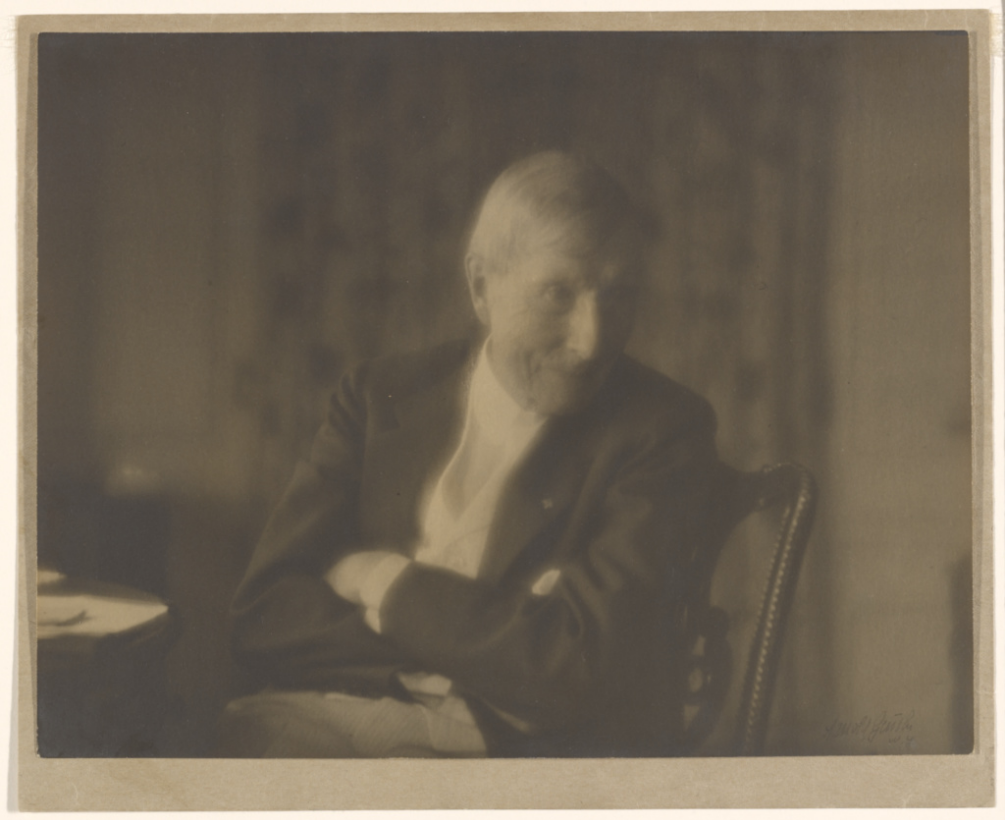


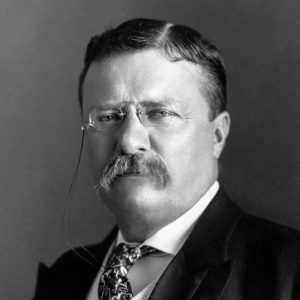
38 comments
Sudura Zakir
In order to grab readers’ interest, the author starts by drawing references to affluent American businesses of the present, such Elon Musk. He painstakingly depicts the ups and downs of Rockefeller’s time spent in the oil distribution industry. Rockefeller is portrayed by the author as a cunning businessman with a happy ending in which he succeeds and becomes the wealthiest American businessman. This includes his reliance on railroad barrels, the invention of tank cars, being deceived by the Standard Company, and his catapulting into business.
Christopher Morales
The author wrote this article very well and made the business of it sound really interesting. As an entrepreneur, he adjusted and went through many different experiences and always found a way to make profit at the end. The amount of power he had with his wealth is something very interesting as well and something the author made very apparent. He was a true genius of business as he often adjusted and took opportunities to his advantage such as the railroads.
Eugenio Gonzalez
The article was informative, with a compelling narrative that maintains the reader’s attention with the risen of John D. Rockefeller. Throughout the article, Rockefeller finds a way to continue to profit with his business even if he faces difficult circumstances such as economic crises and boycotting. In the last sentence, the author does an excellent job of describing who John D. Rockefeller was. I could not imagine that John D. Rockefeller almost went bankrupt.
Isabella Lopez
This was well written. I really enjoyed reading this. Typically you only hear about Rockefeller but never about Clark so I think it’s great how his name was mentioned. Another great “self made” story with a bit of some clever and cruel tactics. That’s impressive how most companies today branches of from the Standard oil company.
Mark Gallegos
The comparison between Rockefeller and the billionaires today was an excellent opening that helps the reader understand how powerful this man was. The paragraphs are well sectioned based on events in Rockefellers story. The way he bounced his company back from near bankruptcy to stronger than the government shows how ruthless of a business man he was. In the end, I think this article is very well-written.
Guiliana Devora
This introduction really had me interested in reading the rest of the article because to say that a man is richer than Elon Musk and Jeff Bezos is insane. These two men are one of the most wealthiest men in the world and the author is telling me that Rockefeller is richer than both of them, now to me that hook had me interested right off the bat.
Rosalyn Ledesma
This article was written so cohesively, I felt like the article never had any awkward transitions. Rockefeller, a man who started as a small business man, became a man with an empire through constanly seeing the next steps ahead of him. It’s honestly admirable to see someone overcome each obstacle and grow into more success. However, like many of the other robber barons, he became someone who sought out even more power and influence that he already had. I think the ending of your article really showcases his road to success.
Clarissa Liscano
Amazing, well-written article that taught me a lot about Rockefeller. To say he was a businessman is an understatement. He was able to overcome all of the challenges that were put in his path, use them to his advantage, and build upon them, particularly when he later used horizontal and vertical integration to fully remove competition. His empire had a huge impact on America.
Rawan Hawsawi
The author draws attention by first relating to contemporary wealthy American businessmen such as Elon Musk, making the story relatable to the current reader. He carefully shows the rollercoaster that was Rockefeller’s stint in the oil distribution business. From his reliance on railroad barrels to the development of the tank cars, being duped by the Standard Company and his catapulting to business, the author paints Rockefeller as a shrewd business mogul with a happy ending where he becomes the wealthiest American businessman.
Lyle Ballesteros
Very well written article. I found how interesting Rockefeller and other very rich businessmen and robber barons make their money and get to the top by taking opportunities that are shown and not wasting them. When Rockefeller was in tough spot with the government and other businesses in the public eye he saw that tanks on trains that carried only oil was the next way to go. He saw the opportunity that the railroads weren’t taking and helped revitalize his empire and monopolize even more. He may not have been a great man or had good business practices like the rest of these robber barons but he saw opportunities and pounced on them.